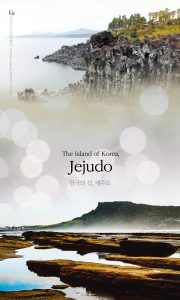 Jejudo is the largest island in Korea with an area of 1,833.16㎢ in the South Sea. Jejudo was originally called Tamra because the Tamra kingdom ruled the island until it went under the control of Goryeo in 1105.
Jejudo is the largest island in Korea with an area of 1,833.16㎢ in the South Sea. Jejudo was originally called Tamra because the Tamra kingdom ruled the island until it went under the control of Goryeo in 1105.
In the middle of Jejudo is Mt. Halla, the highest peak (1,905 meters) in South Korea. The volcanic mountain of Halla stretches from east to west, forming gentle slopes. Mt. Halla features 360 parasitic cones and the Baekrokdam, a 500-meter-diameter, 3㎞-circumfence crater at its summit. With distinct vegetation change by elevation, the mountain is home to more than 1,800 plant species for different temperature zones, including subtropical, warm, and cold. Its volcanic activities formed majestic cliffs and waterfalls across Jejudo. Mt. Halla was designated as a Korean natural reserve in 1966 and a national park in 1970. It was also designated as a UNESCO Biosphere Reserve in 2002, a UNESCO World Natural Heritage Site in 2007, and a UNESCO Global Geopark in 2010.
With its unique natural environment, Jejudo has created a unique culture different from the mainland. Female divers called Haenyeo are particularly known. These tough divers, mostly in their 70s and older, dive to collect seafood without oxygen tanks. Their teamwork and respect for the ocean are highly regarded, and the culture of the Jeju Haenyeo was listed on the UNESCO Intangible Cultural Heritage in 2016.
Jejudo’s beautiful natural features and unique culture are now appreciated and protected by both Korea and international communities.